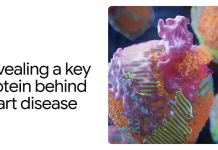We gave our new ones C2S 27B scale model the task: Find a drug that works like conditioned reinforcerone that will enhance the immune signal Just in a specific “immunologically positive context” environment in which low levels of interferon (a key signaling protein of the immune system) were already present but insufficient to trigger antigen presentation on its own. This required a level of conditional reasoning that seemed to be an emergent scale possibility; our smaller models were unable to resolve this context-dependent effect.
To achieve this, we have designed, among others: virtual screen with dual context to find this specific synergistic effect. The virtual screen consisted of two stages:
- Positive immunological context: We fed the model with real-world patient samples with intact tumor-immune interactions and low levels of interferon signaling.
- Immunologically neutral: We provided the model with isolated cell line data without immunological context.
We then simulated the effects of over 4,000 drugs in both contexts and asked the model to predict which drugs would work. Just increase antigen presentation in the first context to direct the screen toward patient-relevant settings. Of the many drug candidates identified in the model, some (10–30%) drug hits are already known in previous literature, while the remaining drugs are surprising hits without a previously known link to the screen.
From prediction to experimental validation
The model's predictions were clear. A striking “context separation” has been identified for a CK2 kinase inhibitor called silmitasertib (CX-4945). The model predicted strong increase in antigen presentation when silmitasertib was used in the “immune context positive” condition, but there was little or no effect in the “immune context neutral” condition. What made this prediction so exciting was that it was a novel idea. Although CK2 plays a role in many cellular functions, including as a modulator of the immune system, CK2 inhibition by silmitasertib has not been reported in the literature to significantly increase MHC-I expression or antigen presentation. This emphasizes that the model generated a new, testable hypothesis and did not simply repeat known facts.
However, a prediction is only valuable if it can be confirmed in clinical application. The real test first takes place in the laboratory and ultimately in the clinic.
In the next phase of our project, we took this hypothesis to the bench and tested it on models of human neuroendocrine cells, a cell type that the model was completely invisible to during training. Experiments have shown:
- Treatment of cells with silmitasertib alone had no effect on antigen (MHC-I) presentation.
- Treating the cells with a low dose of interferon alone had a moderate effect.
- Treatment of cells with both silmitasertib and low-dose interferon resulted in a marked, synergistic amplification of antigen presentation.
Interestingly, in our laboratory tests, the combination of silmitasertib and low-dose interferon resulted in an approximately 50% increase in antigen presentation, which made the tumor more visible to the immune system.
Models in silicon predictions have been confirmed many times in vitro. The C2S-Scale project identified a novel interferon-dependent enhancer, uncovering a new potential pathway that turns “cold” tumors “hot” and potentially more sensitive to immunotherapy. While this is an early first step, it provides a powerful, experimentally validated lead for the development of new combination therapies that use multiple drugs at the same time to achieve a more potent effect.
This result also provides a blueprint for a new kind of biological discovery. It shows that by following the scaling laws and building larger models like the C2S 27B scale, we can create predictive models of cellular behavior that are powerful enough to run high-throughput virtual screens, discover contextually driven biology, and generate biologically driven hypotheses.
Yale teams are currently investigating the mechanism discovered here and testing additional AI-generated predictions in other immunological contexts. With further preclinical and clinical validation, such hypotheses could ultimately accelerate the path to new therapies.
First steps with C2S-Scale 27B
The new C2S scale 27B model and its resources are now available to the research community. We invite you to explore these tools, build on our work, and support us as we continue to translate the language of life.


















